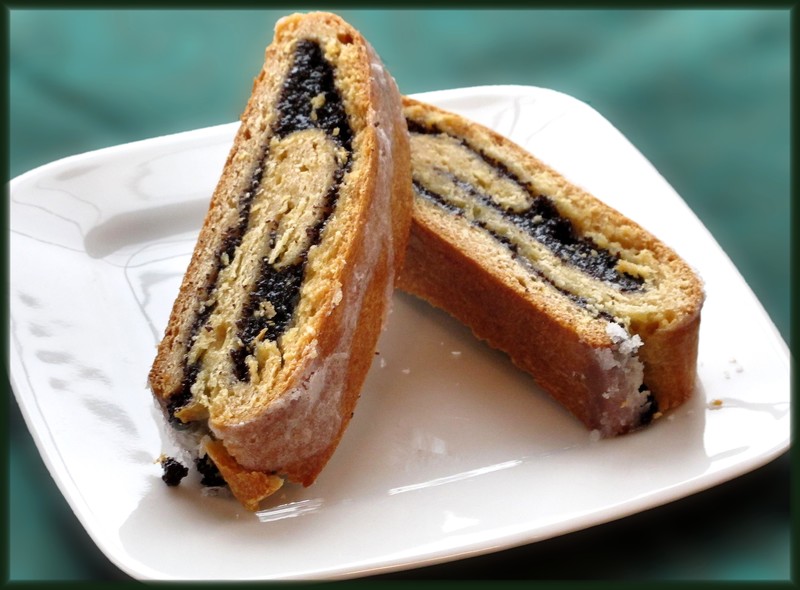After hearing so much about her culinary expertise, I asked my neighbor, Teresa Misiolek, to share her insights into the cuisine of her native Poland. In light of the upcoming holidays, she introduced me to the Christmas Eve celebration of Wigilia (from the Latin word for vigil).
Work in the kitchen begins several days before Dec. 24 in order to prepare the 12 different dishes served for dinner. The primary ingredients of the meatless meal are cabbage, mushrooms, fruit and fish. A typical menu begins with at least two kinds of soup, one with wild mushrooms and the other a ruddy beetroot broth garnished with uzska or little ears (tiny, twisted dumplings filled with wild mushrooms).
Fried carp is featured as the main course, and side dishes include cabbage with mushrooms, sauerkraut with beans, potato and onion pierogi, herring with creamy horseradish sauce and compote of stewed dried fruits.
Although there’s a focus on the food, much of the magic of Wigilia is found in the customs surrounding the meal. Strands of hay are placed on the table and in the corners of the room as a reminder that Jesus was born in a stable. Teresa’s tradition includes making sure a few of the pieces of straw are green; whoever finds one will be lucky in love.
When the first star appears in the sky, everyone sits down at the table, which has been covered with a white cloth (or in some wise mothers’ homes, a deep maroon tablecloth to hide drips of red beet soup). An extra place is always set at the table, to be ready to include a stranger who may appear at the door. Before the meal begins, everyone breaks bread together, passing slender wafers called oplatek.
Gifts are exchanged between the main course and desserts, giving everyone a chance to find room for the sweet treats that end the feast. And, just before the day ends at 12, families in Polish villages walk to church together to attend the midnight service, Pasterka - the Mass of the Shepherds.
Teresa gave me a sample of the sweet poppy seed roll (makowiec) she usually serves for dessert on Wigilia. Buttery dough is spread with a mixture of ground poppy seeds, raisins, orange peel and nuts. It’s rolled into a loaf, baked until golden brown and drizzled with a sugary glaze - a delicious combination of texture and flavor.
My attempt to recreate this rich treat can be seen in the photo. Since I couldn’t find ground poppy seeds without going to the Polish markets in suburban Philadelphia, I started with a can of poppy seed filling. It was already quite sweet with almost too fine a texture; I added chopped raisins and walnuts to round out the mixture.
You can find all sorts of recipes for the dough, most of which call for lots of butter and eggs, almost like a challah bread. Because of the butter in the dough, it’s quite heavy; you’ll need to make sure the yeast is fresh to sufficiently expand the dough (I don’t think mine rose quite enough, but it tasted great nonetheless).
I’ve included recipes for Teresa’s stewed fruit compote and a glazed poppy seed roll - two elements of a lovely holiday tradition.
Teresa’s Fruit Compote
1/2 lb dried fruit (apricot, apple, pear)
1/2 lb dried prunes
1/8 t cinnamon
6 C water
1 T sugar (optional)
Combine ingredients in a saucepan. Bring to a boil, then reduce heat to low. Simmer for 30 minutes. Serve warm or cold.
Poppy Seed Rolls (Makowiec)
1 pkg active dry yeast
1 1/2 C warm milk, divided
6 C flour
8 T butter
3/4 C sugar
1 t salt
2 eggs
2 egg yolks
1 t vanilla
2 t grated lemon zest
2 11-oz cans poppy seed filling
1 1/2 C chopped walnuts
1 C chopped raisins
1/2 C confectioner’s sugar
2 t milk
Line a baking sheet with parchment paper; set aside. In a small bowl, dissolve yeast in 1/2 cup of the warm milk; set aside to proof. Place the flour in a large bowl and cut in the butter with a pastry blender until the mixture resembles coarse crumbs. Stir in the salt and sugar; mix in the remaining 1 C milk, yeast, eggs, egg yolks, vanilla and lemon. Once the ingredients are mixed and can form a ball of dough, turn out onto a work surface and knead until the dough is smooth, about 8 minutes.
Roll the dough into a ball and place in a clean, greased bowl. Cover bowl with a dishtowel and set in a warm place for two hours or until double in size. Punch down and turn out onto a floured surface. Divide dough in half and roll each piece into a rectangle about 1/8-inch thick. Combine poppy seed filling with walnuts and raisins. Spread one half poppy seed mixture onto each dough rectangle. Roll the dough from the longest edge and place seam side down onto prepared baking sheet. Cover and let rise again until double in size. Preheat oven to 350 F. Bake until golden brown, about 40 to 50 minutes. When rolls come out of the oven, combine sugar and milk; drizzle glaze over rolls while still slightly warm.




















































